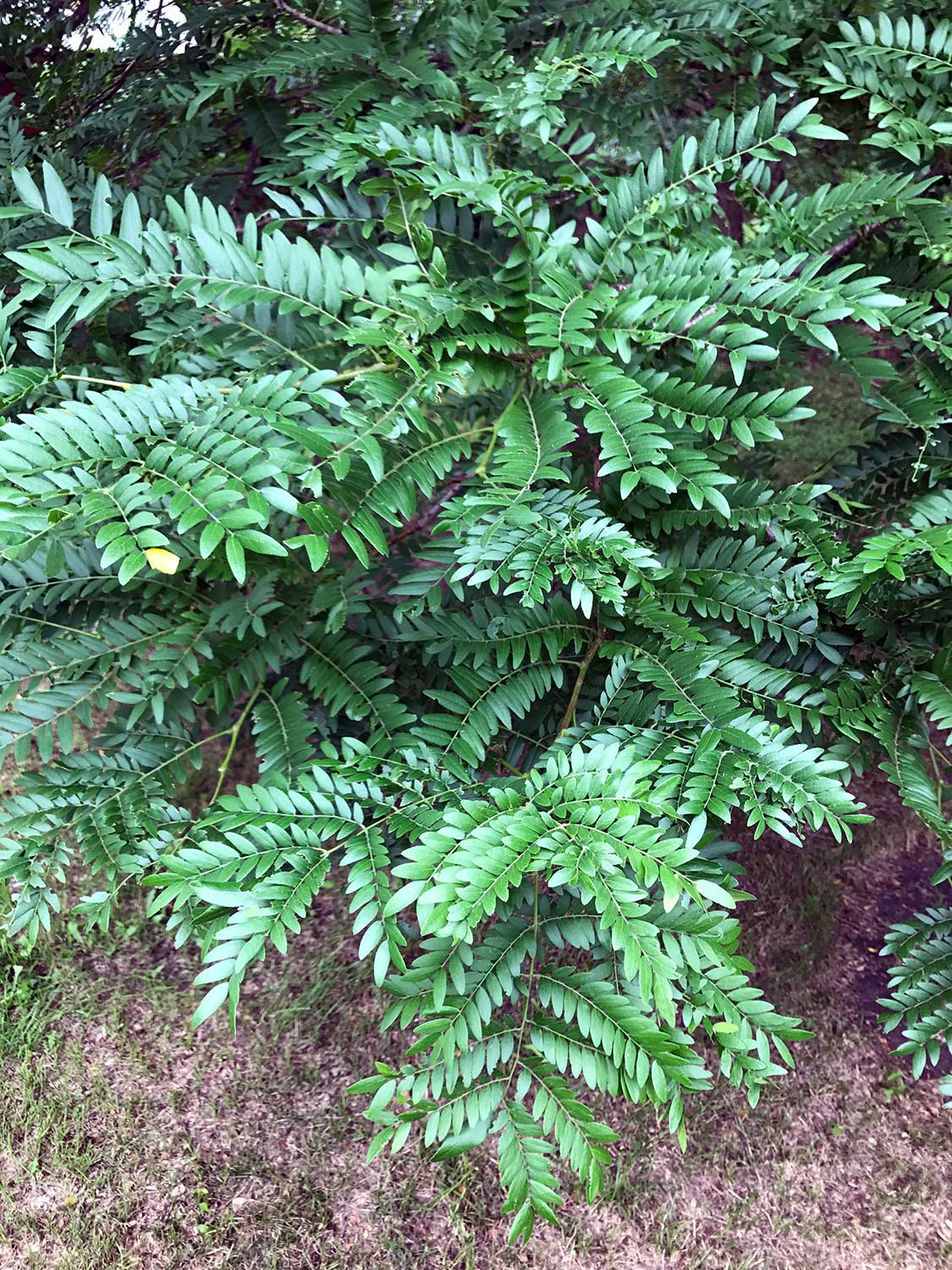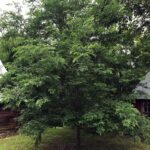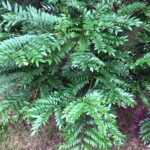Native To State: NO
Naturally Occurring: NO
Description
Gleditsia triacanthos f. inermis (Thornless Honeylocust) is a deciduous tree belonging to the Fabaceae family. Here are some key identification characteristics:
Size and Shape: Thornless honeylocust is a medium to large-sized tree, typically reaching heights of 40 to 70 feet (12 to 21 meters). It has an open, spreading canopy with delicate, feathery foliage.
Leaves: The leaves of Gleditsia triacanthos f. inermis are pinnately compound and alternate along the branches. Each leaflet is small and elongated, giving the foliage a fern-like appearance. The leaves are bright green during the growing season and turn golden-yellow in the fall.
Thorns: Unlike the typical species (Gleditsia triacanthos), this variety is “inermis,” which means it is thornless. As such, you won’t find the long, sharp thorns that are characteristic of the species.
Bark: The bark of young thornless honeylocust trees is relatively smooth and grayish-brown, gradually becoming rougher with age and developing ridges and furrows.
Flowers: The tree produces small, inconspicuous greenish-yellow flowers in the spring. The flowers are typically not showy but are important for pollination.
Fruit: Thornless honeylocust bears long, flat, and twisted seed pods (legumes) that are 6 to 18 inches (15 to 45 centimeters) in length. The pods mature in late summer to early fall and turn brown. They persist on the tree throughout the winter.
Habitat: This variety is often planted as an ornamental tree in urban and residential areas due to its attractive appearance and thornless nature. It can tolerate a wide range of soil conditions and is relatively drought-tolerant once established.
Cultivation: Thornless honeylocust is widely planted for its aesthetic value, providing filtered shade in landscapes and streetscapes.
Other Species: It’s essential to differentiate this thornless variety (f. inermis) from the typical species (Gleditsia triacanthos) that does have thorns.
Thornless honeylocust is favored for urban landscapes and other settings where thorns might pose a concern. Its delicate foliage and absence of thorns make it an appealing choice for those seeking a low-maintenance and visually pleasing tree.
Occurrence
One large specimen planted near barn in 2008.



